The modern world of systems and software development and delivery presupposes we work faster and better, do more with less, change continuously, and invent new ways of working.
Mastering the “art” of adopting agile and lean software product development and delivery requires you ask yourself, “Do I really understand the science (technology) and the art (behavioral nuances) associated with this undertaking?”
Your blended understanding of the art and science of your agile adoption is greatly influenced by your left and right brain functions as depicted in Figure 1.0.
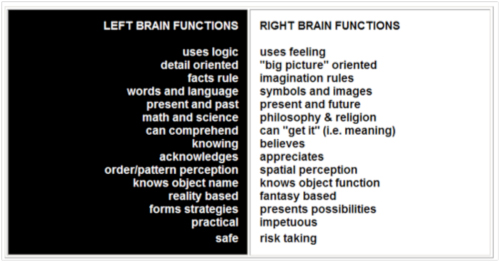
Figure 1.0 – Brain Functions
This article takes a look at mastering the art/behavioral aspects of agile and lean system and software product development and delivery; focused on effectively dealing with change.
There is a Yin-Yang [1] to being agile and lean. Yin-Yang are two complementary mutually rooted qualities. That is to say, the yin and the yang aspect of any one phenomenon will, when put together, form the entire phenomenon. Yin-yang is a philosophy of duality. This is the reason the Chinese word has no "and" between yin and yang - the term always expresses the two making up the one.
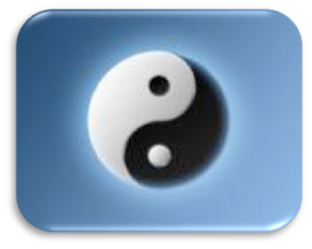
The yin-yang of the scientific and artistic sides of agile and lean systems-software development and delivery is a synergistic blend. The scientific left-brain point-of-view is what our industry’s thought leaders have focused most of their attention on with their proliferation of guidance, books and articles. For example the widely used Scrum framework as depicted in Figure 2.0 or books titled, User Stories Applied: For Agile Software Development by Mike Cohn, Lean Software Development: An Agile Toolkit, by Mary Poppendieck, Scaling Software Agility by Dean Leffingwell, and more.
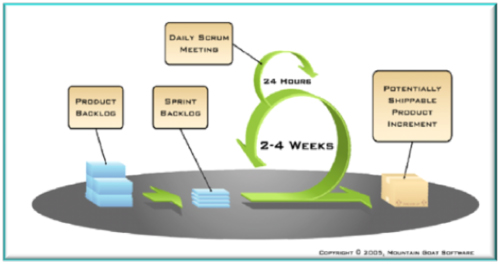
Figure 2.0 – Scrum Framework
Another example of characteristics associated with the scientific or left-brain part of being agile and lean is the likes of a manifesto [2] which delineates Agile values and principles. Additionally there is a plethora of terms and vocabulary associated with being agile and lean as depicted in Figure 3.0.
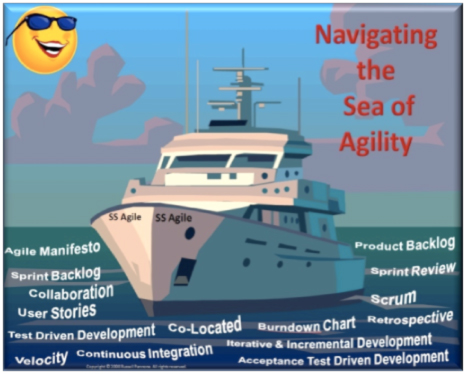
Figure 3.0 – Navigating the Sea of Agility
The focus of this article is on the art/behavioral or more towards the right-brain functions of agile and lean system-software product development and delivery.
In a scene from the film the Wizard of Oz, based on L. Frank Baum’s novel The Wonderful Wizard of Oz, Dorothy befriends a Scarecrow, a Tin Woodsman, and a Cowardly Lion. As we all know, the three decide to accompany Dorothy to go off to see the Wizard to obtain their desires (a brain, a heart, courage and a way home). Along the way they are plagued by a forest of angry apple trees and several attempts to stop them by the Wicked Witch of the West. There’s no real threat, only the possibility of what may lie behind the trees. Imagination takes hold, and fear moves from one to the other, until the entire group is fraught with apprehension and dread. A picture of what could lurk in the woodland is all that’s needed to change the behavior of the traveling companions. The camaraderie of happy explorers is transformed into a small group of hunched-over, shaking individuals who walk slowly, not realizing the danger is an imagined one, and their fears have no basis in reality; as Dorothy laments, "Lions and tigers and bears, Oh My!
I bet if you are or have attempted to be agile and lean you identify with Dorothy and her friends as you walk down the path of agile and lean system-software development and delivery. Like Dorothy, the Tin Man, the Cowardly Lion and the Scarecrow being agile and lean takes wisdom, passion and courage, a desire to be better and openness, especially to change.
Based on a survey conducted by Version One in 2008, distributed to 80 countries and the returned 2,300 responses (see Figure 4.0) the top two barriers to being agile and lean are the ability to change organizational culture and a general resistance to change.
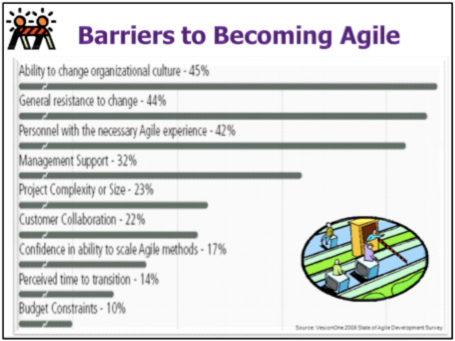
Figure 4.0 – Barriers to Becoming Agile
Unfortunately, available evidence shows that most organizations can become agile but that we often make terrible mistakes when we try because we simply are not prepared for the transformational challenges. This is so because most agile transformation efforts fail to realize that becoming agile is a reengineering, re-strategizing and cultural renewal effort. As a result the most overlooked aspect of being agile and lean is effectively dealing with change.
So what can be done? Here is what I have seen work. Start with a vision or roadmap (see Figure 5.0) that is embraced and realized [3] by the entire organization from the top down and bottom up.
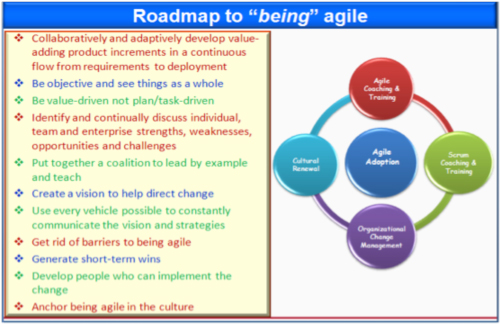
Figure 5.0 – Roadmap to Being Agile and Lean
Always keep in mind:
- The what, why, and how of agile and lean product (system-software) development is not mine or one person’s vision alone; to become reality it needs to be a "shared" vision
- There is no one-size-fits-all agile and lean product development process
- Delivering early and often, giving ourselves the best opportunity to beat the competition to market, realize revenue and discover insights that we can use to help us improve
Next one must be keenly aware being agile and lean has its roots in William Deming’s [4] Plan-Do-Check(Study)-Act (PDCA) quality improvement cycle, as depicted in Figure 6.0, which is all about planning a little, doing a little, inspection, adaptation and iteratively and incrementally improving.
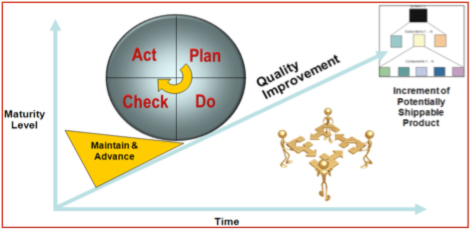
Figure 6.0 – William Deming’s Quality Improvement Cycle
In fact PDCA is at the heart of the Scrum framework. What makes the difference is when the individual, the team and the enterprise internalizes and then externalizes that being agile and lean is all about repetitively checking how things are going and adapting to change.
In conclusion the first requirement for change is having the strongest intention to do so, deeply wanting to change and being able to see the big picture. It is all important to recognize we need to accept that the world is constantly changing, and we are a part of that change.
We have to be ego-less, to make new choices and let go of thoughts, emotions and actions that aren’t helpful. It takes a commitment and awareness to acknowledge that change must come first from within and then do something about it. The individual and the team need to rally around and believe in what they are doing and share a willingness to start doing something together resulting in operational or commercial value in a world of uncertainty.
One needs to accept you can’t control everything. I think we all know this at some level, but the way we think and act and feel many times contradicts this basic truth. We don’t control what the entire organization does, and yet we seem to wish we could.
Most of the time we can’t even control everything within your own little sphere of influence — you can influence things, but many things are simply out of your control. So as you are faced with the many things that we cannot control as you walk down the path of agile software development, we need to accept that, or we will constantly be frustrated and stopped in our tracks.
In order to make change a reality one also needs to understand people are motivated from within. This having been said leaders can set up an environment in which people are able to motivate themselves.
To set up an environment that enables employees to be motivated, leaders need to understand what the motivational needs of individuals and groups are.
Determining the “what's in it for me” for individual employees and workgroups that is consistent with goals and strategies of the organization is the key to improving motivation for individuals and groups of employees.
Frederick Irving Herzberg [5] (1923–2000) was a psychologist who became one of the most influential names in business management. He is most famous for introducing job enrichment and the Motivator-Hygiene theory. Herzberg proposed the Motivation-Hygiene Theory, also known as the two factor theory (1959) of job satisfaction. According to his theory, people are influenced by two sets of factors as depicted in Figure 7.0.
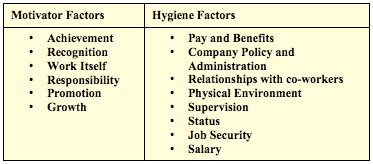
Figure 7.0 – Frederick Herzberg’s Motivator-Hygiene Theory
He proposed several key findings as a result of this identification.
- People are made dissatisfied by a bad environment, but they are seldom made satisfied by a good environment.
- The prevention of dissatisfaction is just as important as encouragement of motivator satisfaction.
- Hygiene factors operate independently of motivation factors. An individual can be highly motivated in his work and be dissatisfied with his work environment.
- All hygiene factors are equally important, although their frequency of occurrence differs considerably.
- Hygiene improvements have short-term effects. Any improvements result in a short-term removal of, or prevention of, dissatisfaction.
- Hygiene needs are cyclical in nature and come back to a starting point. This leads to the "What have you done for me lately?" syndrome.
- Hygiene needs have an escalating zero point and no final answer.
People who inspect and adapt are able to organize their thoughts in ways that generate appropriate and positive actions. Adaptive abilities are necessary as changes occur in individuals and their circumstances.
If we inspect and we are adaptive, we will react to change in creative or constructive ways. An adaptive individual is able to refocus the mind in new directions and make choices based on his or her desired outcomes.
Epilog
Unlike Dorothy, clicking our heels will not magically turn us into wizardly agile and lean practitioners. But, like the Scarecrow, Tin Man and Lion,
"...one of the strongest motives that lead men to art and science is escape from everyday life with its painful crudity and hopeless dreariness, from the fetters of one's own ever-shifting desires. A finely tempered nature longs to escape from the personal life into the world of objective perception and thought." - Albert Einstein
Delivering early and often, giving ourselves the best opportunity to beat the competition to market, realize revenue and discover insights that we can use to help us improve is accomplished by effectively dealing with the emotional and creative tension of moving from an individual’s, team’s and organization’s current state, to an adaptive and evolutionary "shared" vision of "being" agile and lean.
As Steve Brunkhorst [6] so aptly puts it “it is the set of the sail that matters—not the direction of the wind”. “True motivation comes from within - from the willingness to see a dream fulfilled - from the desire to leave the world better than you found it. Sometimes life will stretch us if we don't stretch ourselves enough. Think of new ways to out-distance yourself.... Set a new benchmark that is all yours. Create visions of hope based on new behaviors rather than regret based on past mistakes. Whatever, your talent, your internal desire will pull you past obstacles because of the motivation that was born and lives deeply within you. Other people cannot really motivate you, and it isn't the books you read that make you successful. People and books can light your fire if there a passion and a motive already inside you. They can guide you and awaken valuable insights. But it's your choice to move or stay where you are.”
[1] http://en.wikipedia.org/wiki/Ying_and_yang
[2] Beck, et al., Manifesto for Agile Software Development
[3] To bring into concrete existence
[4] http://en.wikipedia.org/wiki/W._Edwards_Deming
[5] http://en.wikipedia.org/wiki/Frederick_Herzberg
[6] Steve Brunkhorst is a professional life success coach, motivational author, and the editor of Achieve! 60-Second Nuggets of Inspiration, a popular mini-zine bringing great stories, motivational nuggets, and inspiring thoughts to help you achieve more in your career and personal life.
About the Author: Russell Pannone is the Founder of We Be Agile and the Agile Lean Phoenix User Group, as well as the Agile-Lean Adoption Lead. With almost 30 years of system-software development and delivery experience, my focus is on working side-by-side with folks on real projects helping them deliver valuable system-software to production early and often, giving those I collaborate with the best opportunity to beat the competition to market, realize revenue and discover insights that we can use to help us improve.

